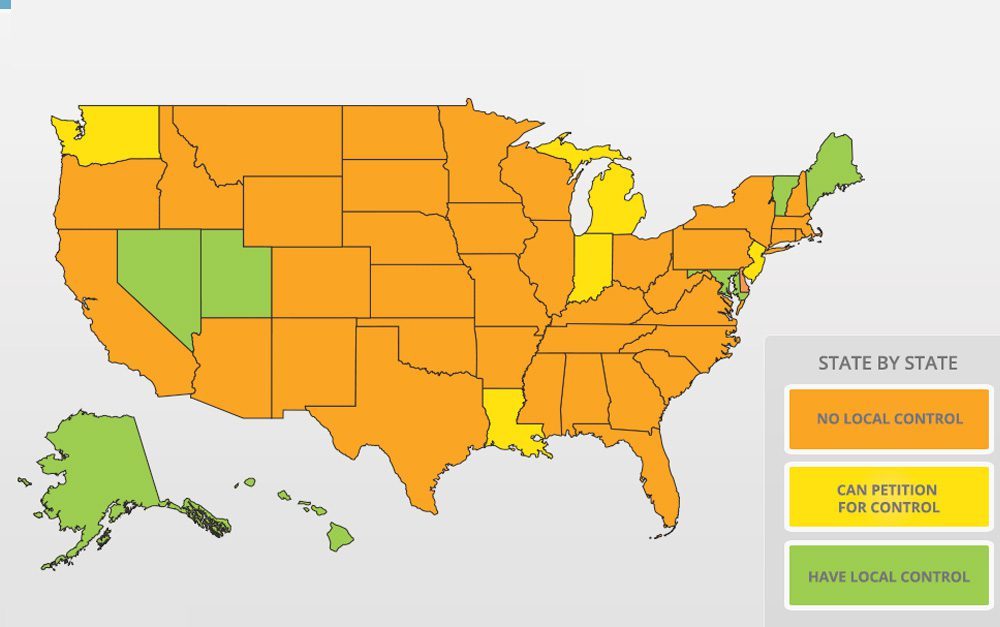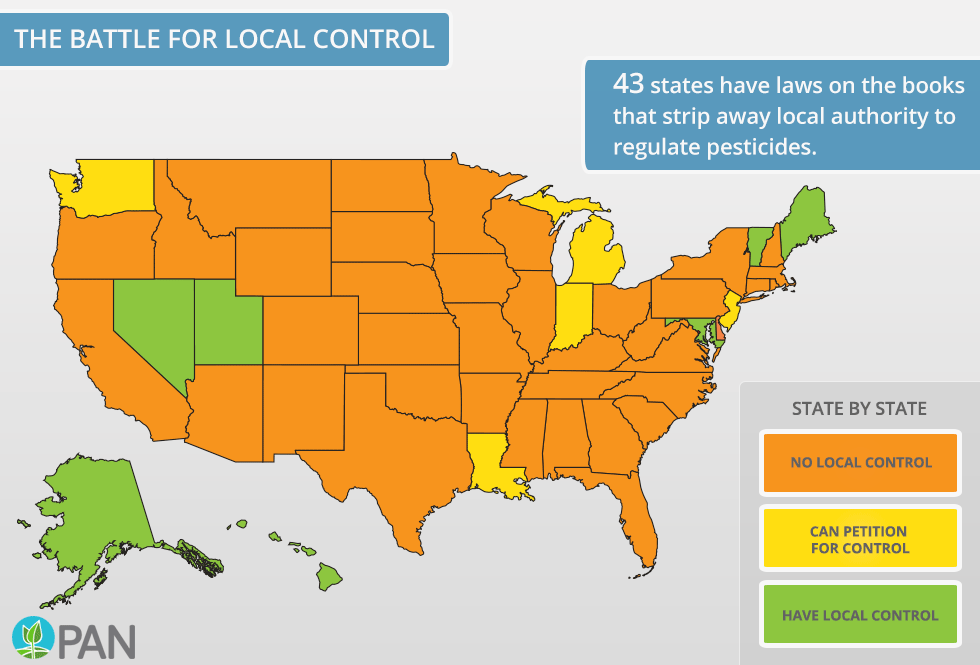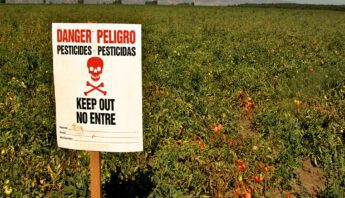Preemption. It means one level of government trumping control of another. And, when it comes to pesticide policy, it’s a key hurdle to progress in communities across the country.
In all but seven states, local communities cannot put rules into place that are stricter than state-level regulations — the state rules “preempt” local control. It didn’t used to be this way, and communities across the country are now standing up to bring power back to the local level.
Industry’s preemption strategy
The rapid spread of preemption laws was driven by an aggressive pesticide industry campaign, launched back in 1991.
That’s when the “Coalition for Sensible Pesticide Policy” was formed by pesticide lobbyists, in direct response to a Supreme Court finding that local communities did indeed have the right to put rules in place that were stricter than federal regulations.
Unfortunately, the ruling left the door open for state governments to “preempt” this authority, and the lobbyists — wanting to maintain as much influence as possible on policy decisions — sprang into action.
Shutting down local voices
The “Sensible Policy” group developed model legislation and rushed to introduce it in statehouses across the country. Before long, 43 states had preemption laws in place.
These laws — many using the exact language developed by industry — specifically limit the ability of city or county governments to ban or restrict pesticides in any way, including “use, sale, notification, marketing, distribution” and more.
Such pre-emption laws do not exist in Canada. Over the past 20 years, more than 170 Canadian cities and towns have outlawed use of pesticides for “cosmetic” purposes such as lawn care. Canadian community activists report that more than 22 million Canadians (65% of the population) are now protected from exposure to cosmetic pesticides.
Tackling trouble in paradise
A key preemption battle is brewing on the Hawai’ian islands, one of the seven states in the country maintaining local control.
The island state is ground zero for testing and development of genetically engineered (GE) crops. Since most of these seeds are designed to tolerate increased herbicide use, communities are experiencing unprecedented exposure to pesticide runoff and drift.
Deeply concerned about the health, environmental and cultural impacts of these chemicals, engaged community members on both Kaua’i and Mau’i won local ordinances calling for increased buffer zones, regular reporting and — in the case of Mau’i — a moratorium on testing and cultivation of GE crops.
These victories came in the face of unprecedented opposition spending. In Mau’i alone, corporations like Bayer (now merged with Monsanto) and Dow spent nearly $8 million — making the battle the most expensive local ordinance campaign in history. Though the ordinances passed in both counties, they were immediately challenged in court by the corporations.
Progress from the ground up
From pesticide-free schools to protective buffer zones, local leaders across the country are taking important steps to protect their communities from pesticides.
Just a few of many examples:
- In Takoma Park, Maryland, the city council restricted use of lawn care pesticides on both public and private property with the Safe Grow Act of 2013.
- Community leaders in Kern and other California counties leveraged special authority granted local agriculture commissioners in the state to win protective pesticide buffer zones around homes and schools.
- The Minnesota cities of Shorewood and Stillwater led local efforts to protect bees from pesticides by adopting rules restricting pesticide use and pledging to become “Honey Bee Havens.” Three other Minnesota cities and two in California have since followed suit.
For now, the pesticide preemption rules do not apply when it comes to restricting the use or sale of GE crops. Cities and states across the country — from Oregon to Colorado to Maine — have put measures in place banning the cultivation or sale of GE crops.
How to get involved? Those with community control over pesticide rules (see map above) can put this local authority to good use. If you live in one of the states with limited preemption, you can work with local leaders to petition the state for stronger local rules.
For those in the remaining states, it will take state legislation to shift authority back to the local level. Shining a light on the history of industry-driven effort to take local control away is an important first step.








